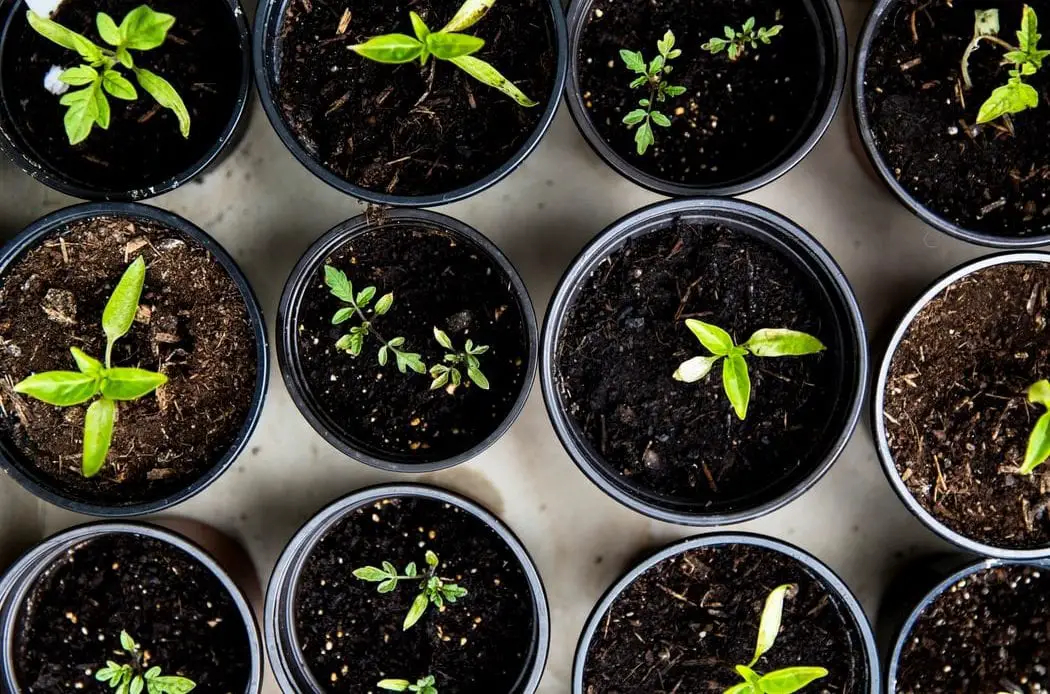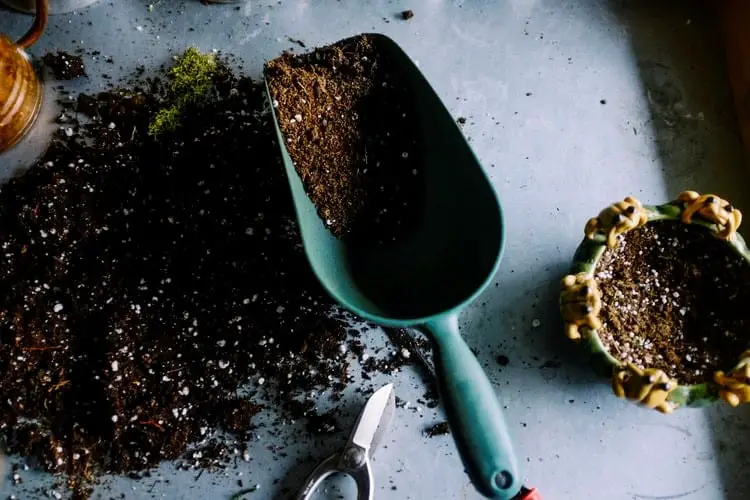
Selecting the accurate soil type is vital for sowing seeds and cultivating healthy plants. Proper soil provides a foundation for holding plants firmly and supplies crucial nutrients that plants need to grow. Since the health of a plant is strongly affected by the type of soil it has access to, choosing and improving the soil type is essential for a healthy garden.
Types of Soil
There are different kinds of soil that can be used for growing plants. Some of these are mentioned below:
1. Chalky: Chalky soil type has more stones and grains than other soils. It is mostly found on limestones or bedrocks that are chalky. This soil is alkaline in nature and may cause leaves to turn yellowish or hamper plant growth. Hummus is incorporated into this soil to improve its efficiency. This type of soil is ideal for growing vegetables like beets, cabbage, spinach, sweet corn. It is also good for shrubs like Lilac, Weigala, and Mock oranges.
2. Clay: This soil has maximum nutrients and can offer many advantages to plants if there is a proper drainage system for it. When dry, this soil type can feel rocky and hard. When wet, it can be lumpy and sticky. Water drainage capacity of this soil is poor and it does not have many air spaces.
Clay soil is heavier and warms up gradually in the spring season. It is ideal for growing fruit-bearing trees and ornamental plants. Shrubs like aster and flowering quince grow well on this soil.
3. Loamy: This is the best soil type for potted plants or backyard plants. Loamy soil is acidic and needs to be regularly mixed with organic matter. This soil consists of clay, sand, and silt. It has a fine texture and a damp nature.
Loamy soil can be cultivated easily and does not dry up a lot during summer. Berry crops and vegetables grow in this soil. Climbers, tubers, and bamboos grow well in this soil type. It is perfect for growing outdoor plants.
4. Peaty: Peaty soil is also acidic in nature and works best when mixed with compost, lime, and organic matter. This soil type is spongy and damp since it contains a high amount of peat. It does not have many nutrients since acid makes the decomposition process slow.
Peaty soil can retain large amounts of water and heats up easily. It is ideal for growing legumes, salads, and root vegetables.
5. Sandy: This type of soil usually gets washed away during heavy rains. Sandy soil needs mulch to contain moisture within itself and needs organic additives to make it suitable for growing plants.
Sandy soil warms up quickly and offers less nutrients for plants. Though it dries out fast, it is easier to cultivate. Carrots, lettuce, potatoes, and shrubs such as tulips, hibiscus, and roses grow well in sandy soil.
6. Silty: Silty soil is easy to cultivate and offers excellent growth of plants if there is a proper drainage system. It is soft in texture and good for growing all types of fruits and vegetables. Grass, climbers, and shrubs grow well in this soil type.
Soil Type for Growing Flowers
Though most plants grow well in good quality soil, some flowers have specific requirements. The perfect soil type for growing flowers has the following qualities:
1. No stones or debris: Big stones and particles can hinder drainage and prohibit a plant from growing. These include roots of dead plants, decayed wood, and trash particles that can also be harmful for the environment. When you are buying soil, ask your supplier to provide screened topsoil. This method passes soil through a sieve and removes huge particles before it is made available to buyers.
2. Retains water: The ideal kind of soil for flowers is one that can retain water but does not become populated with it unless you are growing big plants. If your soil is poor at retaining water, add a few water-storing crystals to improve its water containing capacity. In addition, make sure your soil has drainage holes in the bottom so you can prevent it from becoming soggy.
3. Has nutrients for cultivated flowers: Flowering plants need plenty of nutrients to bloom into an attractive bunch. The soil they are growing in should contain nitrogen, phosphorus, and potassium. Supplementary food can be added during the flowering season to make the soil richer in nutrient content. Use a good soil test kit to determine whether you have the right soil for your flowers. A dark brown color usually indicates that there is plenty of organic matter in the soil and, therefore, it’s good for your flowers.
4. Free from chemicals: Chemicals can be damaging for plants and the entire garden. Always ask your soil provider for proof that the soil has been tested for absence of chemicals.
5. Avoid peaty soil: Although this is optional, peat is a limited resource. Harvesting peat impacts peat bogs, which protect the planet from climate change. You can use other soil types for growing flowers which may provide even better results.
6. Use low nutrient soil for wildflowers: Like some plants, wildflowers are not adapted to thriving in soils that have high nutrient content. The same rule applies to herbs. Using soils with low nutrient content will help facilitate better growth of these plants.

How to Choose the Right Type of Soil?
Several factors should be taken into consideration while determining and preparing the kind of soil that would best suit your needs:
1. Features of Your Plant: Plants have varying nutritional requirements and the type of soil you buy should fulfill these requirements. For instance, a vegetable garden needs moist and loose soil, which gives flexibility to the roots and lets them obtain minerals and nutrients from the soil.
When buying topsoil for growing flowering plants, go for something that has small proportions of sand and clay since they are heavier in texture. The best soil for flowers contains organic matter, is free from peat, and is relatively easy to work with.
2. Quality of the Soil: Soil types containing a mix of different soils will allow your plant to grow properly. Identify the soil in your garden first and make amendments based on the kinds of plants you wish to grow.
3. Plantation Site: The place where you intend to grow your plants will also impact the type of soil you can use. For instance, large potted plants in your balcony or big pots need more nutrient-rich soil than plants in your backyard. Potting soil is made of special ingredients that prohibit less watering or more watering of plants. It is important to invest in good quality soil as cheaper products might not provide all the necessary minerals and nutrients.
4. Soil Preparation: Once you have taken care of steps one to three, the next step would be to prepare your soil. You can modify the soil type using organic matter, mulch, or fertilizers and make it suitable for growing a variety of plants.
Finding the Right Soil: Get Yourself The Best Soil Test Kit
Based on the kinds of plants you are growing in your garden, the pH level of your soil is going to vary. The perfect way to ensure that you have the right soil type is to check your soil with a test kit. The best soil test kit will indicate the current composition of your soil and suggest how you can improve the quality.
There are various kinds of soil test kits. The best soil test kit is usually a pH tester that measures the level of acidic and basic properties in your soil. Knowing this will help you know your plant’s ability to absorb nutrients. Soils that have a pH of 6.5-6.8 allow maximum nutrient intake. If your soil is more alkaline (pH is 7.0 or above) or acidic (pH is 6.0 or less), your plants will not get nourishment. This is true even if the soil offers high amount of nutrients.
Another variety assesses the various elements contained in the soil and their proportions. These include magnesium, nitrogen, phosphorus, calcium, and potassium. Sometimes you can also find the micronutrient content in your soil.
Other soil test kits can determine the moisture content within your soil. This is required especially for plants that need a certain amount of water to grow. The ideal time to have your soil tested is usually in fall or spring when it is very stable. If your soil is missing essential nutrients or minerals, you may add fertilizers or other particles to improve the quality during this time as well.
You can easily find the best soil testing kit online, or you can also go to your local soil testing center and have your soil screened for its composition. Choosing the right kind of soil is crucial for the healthy development of your plants. If you have any questions regarding which soil type you should choose, always consult a professional.
